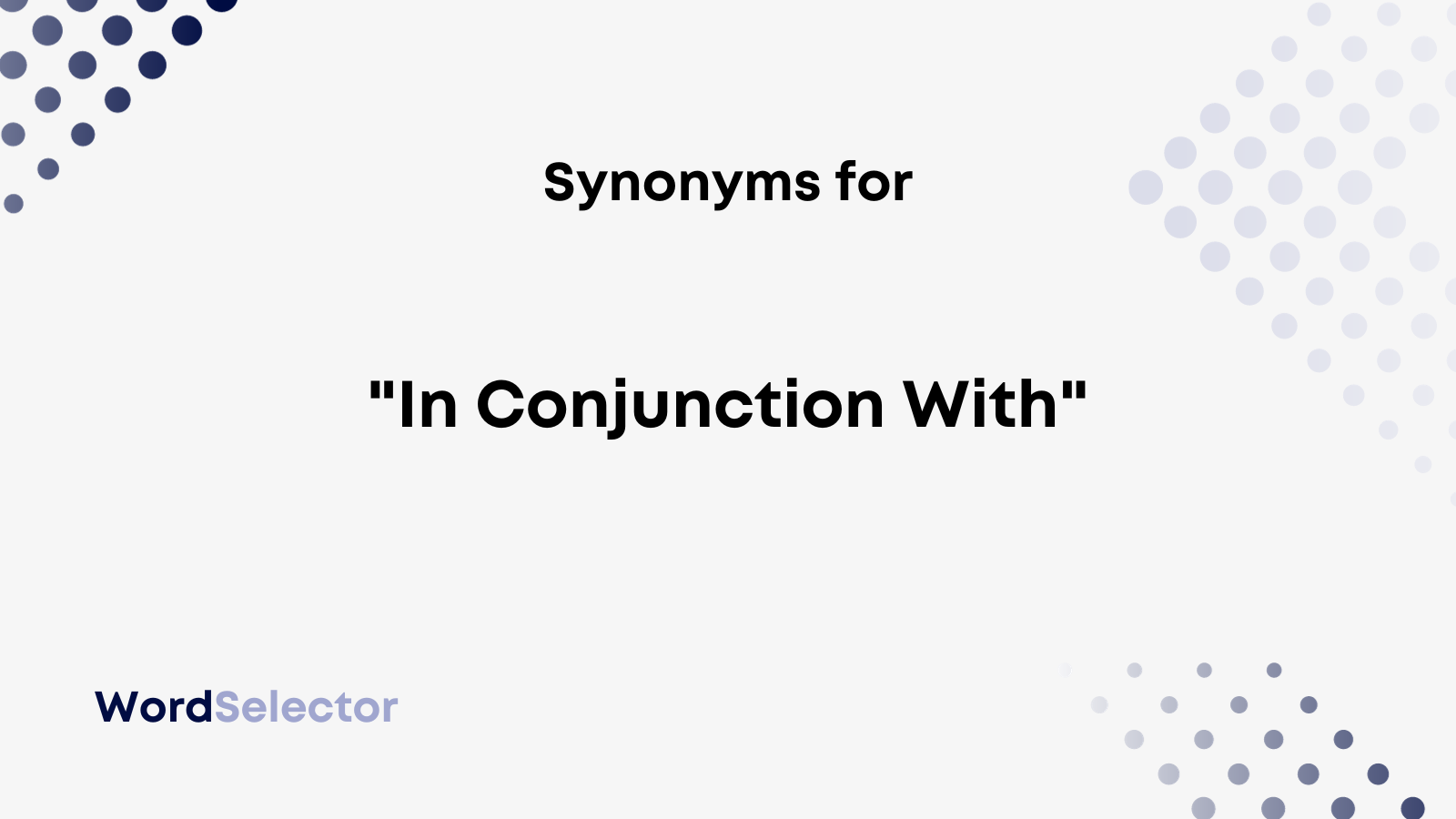Are you about to write “in conjunction with” but are having second thoughts?
Maybe you’re in doubt whether it is truly the best phrase to include in your writing.
Don’t worry; this article will explain other ways to say “in conjunction with” to help you mix things up.
Other Ways to Say “In Conjunction With”
- Together with
- Alongside
- In tandem with
- In collaboration with
- Concurrently with
- In unity with
- In combination with
- Along with
- In partnership with
- In cooperation with
- Partnered with
- In alliance with
KEY TAKEAWAYS
- “In conjunction with” is correct and suitable in legal and business contexts when discussing collaborations.
- “Together with” is a great formal alternative that shows how two things or people have partnered.
- “Alongside” is useful as an informal synonym if you’re looking for something in less professional contexts.
So, keep reading to learn another word for “in conjunction with.” We’ve touched on the two best alternatives to help you keep your writing interesting and engaging.
Alternatively, you can read the last section to learn whether it’s correct to say “in conjunction with.” Then, you’ll know whether to include it in your writing.
Together With (Formal)
We recommend using “together with” as a professional way to say “in conjunction with.” It’s a great way to simplify things and show how two things work together.
For instance, you can use it as a formal synonym for “in conjunction with” as it shows how two things work alongside each other.
As an individual, you could work “together with” another individual or a company.
Or, you can use it to show how two things work together, and how you might have to treat them as such.
It shows how two parties got together to complete a task or project. This is a great way to explain a connection in formal terms, and most people will understand what you’re saying.
Also, using “together” rather than “conjunction” makes it much easier to understand for most readers.
You can also review this email sample:
Dear Miss Berry,
The event will happen together with the meeting. Therefore, you must pick one to attend.
Kind regards,
Dan Watkins
It also works in legal contexts.
You can refer to this example to learn how it works in a legal context:
They were working together with the other firm. Therefore, both firms should be considered at fault.
Alongside (Informal)
You can simplify things further by using “alongside” instead of “in conjunction with.” This time, it’s only one word, but it works well as an informal synonym.
Try using it as a conversational substitute for “in conjunction with.” It lets someone know that you worked with someone or something.
For instance, it can be useful when writing to a colleague. It shows that you’ve decided to take it upon yourself to work alongside another party and see what you can achieve.
Also, it’s worth using it to explain how one thing happens alongside another. This could cause problems in informal settings, but it’s still worth mentioning.
Feel free to refer to this email example if you still need help:
Hi Joseph,
I know you wanted me to work alongside them. However, I could not find common ground, so we had to go our own ways!
Best,
Amy Clive
You can also refer to this example to learn how it works in a sentence:
Unfortunately, both parties are happening alongside each other. I don’t think we can go to both!
Is It Correct to Say “In Conjunction With”?
It is correct to say “in conjunction with.” It means you are working alongside someone or something to achieve a common goal.
You’ll often find it in formal contexts. It’s a great way of showing that you were able to work alongside someone or something.
Also, it works quite well in legal situations. Generally, it shows how two parties interacted with each other.
You can refer to these examples to learn how to use “in conjunction with” in a sentence:
They work in conjunction with each other because I’ve tasked them to do so. That’s why they produce such good results.
We have been tasked to work in conjunction with this company. So, we need to get results out of them.
Generally, when you use “in conjunction,” you have to use the correct preposition alongside it.
Since you’re working “with” someone or something, it’s appropriate to use “with” to highlight that fact.
For instance:
- Correct: We work in conjunction with the other firm.
- Incorrect: They work in conjunction to each other.
There is never a time when “in conjunction to” is correct. So, you should keep it out of your writing.

